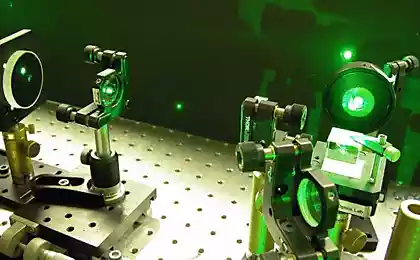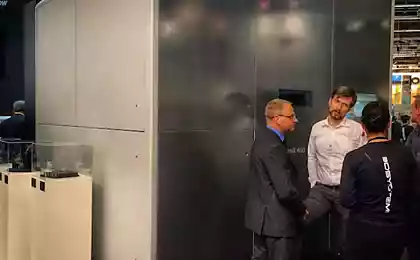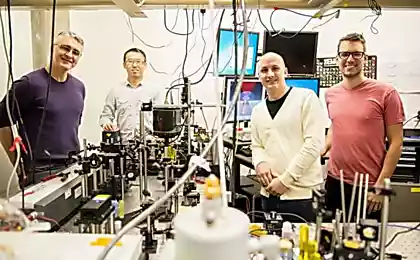167
Scientists have created an acoustic attracting beam
The idea of an attractive beam emitted by a spacecraft and attracting other objects to it has long been a classic of science fiction. However, scientists are slowly but surely moving in the direction of its creation. Back in 2010, beam technology was invented, which at the nanoscale allows you to attract light particles to yourself. However, most recently developed by an international team of scientists from Scotland, the UK and the USA, the method is based on the technology of attracting objects due to acoustic waves.
Rays of light and sound work in a similar way and are waves of different frequencies. However, if you think of these waves as, say, ocean waves, you will be surprised that such waves will attract, rather than repel objects. Usually, to create a shock wave effect (that is, repulsion), you only need to direct the sound wave at the object at the desired angle.
Using a set of emitters that allow you to very accurately control the direction of the sound wave, it is possible to direct energy to the outer surface of the object, which will cause a backscattering effect, which results in the formation of a low-pressure area in front of the object. This effect causes the object to move towards the sound beam, not away from it.
The use of acoustic waves allows us to increase the efficiency of existing attracting rays, and now we can move objects that are visible to our eye. However, the allowed size of these objects is still very small and is about a centimeter in diameter. But even now, despite such limited power, the technology may be interested, for example, in medicine. However, with the development of this technology, we may in the future be able to equip spacecraft with such attractive rays, the same as we have all seen in science fiction films.
source
Source: /users/740
Rays of light and sound work in a similar way and are waves of different frequencies. However, if you think of these waves as, say, ocean waves, you will be surprised that such waves will attract, rather than repel objects. Usually, to create a shock wave effect (that is, repulsion), you only need to direct the sound wave at the object at the desired angle.
Using a set of emitters that allow you to very accurately control the direction of the sound wave, it is possible to direct energy to the outer surface of the object, which will cause a backscattering effect, which results in the formation of a low-pressure area in front of the object. This effect causes the object to move towards the sound beam, not away from it.
The use of acoustic waves allows us to increase the efficiency of existing attracting rays, and now we can move objects that are visible to our eye. However, the allowed size of these objects is still very small and is about a centimeter in diameter. But even now, despite such limited power, the technology may be interested, for example, in medicine. However, with the development of this technology, we may in the future be able to equip spacecraft with such attractive rays, the same as we have all seen in science fiction films.
source
Source: /users/740























